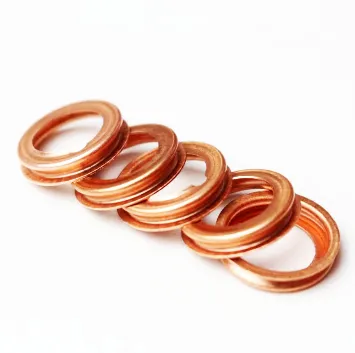How to Choose the Suitable Oil Drain Plug for Your Vehicle
Maintaining a vehicle involves a multitude of small but crucial components, and one often-overlooked part is the oil drain plug. Selecting the right oil drain plug for your vehicle is essential to ensure proper engine function, prevent leaks, and simplify oil changes. This guide will help you understand the key factors to consider when choosing the ideal oil drain plug.

Understanding the Role of an Oil Drain Plug
The quick drain oil plug is a small but significant component that secures the oil pan and facilitates oil changes. Its primary function is to prevent oil from leaking out of the engine while allowing controlled draining during maintenance. A well-chosen oil drain plug ensures a tight seal, prevents contamination, and supports the longevity of the engine.
Material Matters About Oil Drain Plug
Oil plug are typically made from materials like steel, aluminum, or brass. Each material has unique advantages:
- Steeloffers durability and strength, making it ideal for high-performance vehicles.
- Aluminumis lightweight and resists corrosion, often preferred in modern vehicles.
- Brassis softer and ensures a snug fit but may wear out more quickly.
Consider the material compatibility with your vehicle’s oil pan. For example, aluminum oil pans pair well with aluminum or brass plugs to prevent thread stripping.
Thread Size and Pitch About Oil Drain Plug
One of the most critical factors in selecting an oil drain plug is ensuring the correct thread size and pitch. These specifications vary between vehicle models and manufacturers. Using the wrong size can result in leaks or damage to the oil pan threads.
Check your vehicle’s owner’s manual or consult a professional mechanic to determine the appropriate specifications. Many aftermarket suppliers also provide compatibility guides to help you match the plug to your car.
Magnetic Oil Drain Plugs: A Modern Upgrade
Magnetic oil drain plugs are increasingly popular due to their ability to capture metal particles circulating in the engine oil. These particles, if left unchecked, can cause premature wear on engine components. By trapping them, magnetic plugs contribute to better engine health and smoother performance.
While slightly more expensive than standard plugs, magnetic options are a worthwhile investment for vehicles subject to heavy use or frequent oil changes.
Quick-Drain Systems for Convenience
For those who prefer a hassle-free oil change process, quick-drain systems are a game-changer. These plugs feature a valve mechanism that allows oil to be drained without removing the plug entirely.
Quick-drain plugs are particularly useful for individuals performing their own oil changes, as they reduce the risk of spills and save time. However, ensure compatibility with your vehicle and assess the durability of the valve mechanism to avoid potential failures.
Washer Types and Their Importance About Oil Drain Plug
The washer accompanying the oil drain plug plays a vital role in creating a secure seal. Common materials for washers include copper, aluminum, and rubber. Each type offers distinct benefits:
- Copper washersare durable and reusable but require proper torque to prevent leaks.
- Aluminum washersprovide a softer seal and are often single-use.
- Rubber washersoffer flexibility and are effective in high-vibration environments but may degrade over time.
Always replace the washer during an oil change to maintain a leak-proof seal.
OEM vs. Aftermarket Oil Drain Plugs
Original Equipment Manufacturer (OEM) oil drain plugs are designed to meet the exact specifications of your vehicle, ensuring a perfect fit. However, aftermarket options provide greater variety, including magnetic plugs, quick-drain systems, and enhanced materials.
While aftermarket plugs can offer added functionality and performance benefits, always choose a reputable brand to avoid quality issues. Poorly manufactured plugs may lead to threading problems or leaks.
Signs You Need a Replacement Oil Drain Plug
Regular inspection of your oil drain plug is critical to identifying potential issues. Signs that you may need a replacement include visible wear, stripped threads, or oil leakage around the plug area. Additionally, if the plug has been removed and reinstalled multiple times, it may no longer provide a reliable seal and should be replaced.
Addressing these issues promptly prevents further damage to your engine and oil pan.
-
Seal 12x20x5: Precision Radial Shaft Seals for Industrial Reliability
News Nov.24,2025
-
Seal 12x18x5: Essential Guide to Specifications, Applications & Vendors
News Nov.24,2025
-
Understanding Seal 12 20 5: Applications, Specifications & Industry Insights
News Nov.23,2025
-
Durable Oil Seal 85x110x12 – Reliable Sealing Solutions for Industry
News Nov.23,2025
-
Durable and Precise Oil Seal 75x95x10 for Efficient Machinery | YJM Seal
News Nov.22,2025
-
Durable Oil Seal 75x100x10 for Reliable Industrial Performance | YJM Seal
News Nov.22,2025
-
High-Quality Oil Seal 65x90x10 | Durable & Reliable Sealing Solutions
News Nov.22,2025
Products categories















